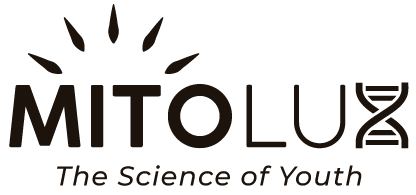In today's fast-paced world, we often find ourselves spending more time indoors than ever before. The consequences of this lifestyle shift are becoming increasingly clear as we grapple with the "Indoors Epidemic" - a term coined to describe the health issues caused by the lack of sunlight exposure essential for our well-being. In this article, we'll delve into the intriguing concept of the Indoors Epidemic, supported by scientific evidence and statistics, to highlight the vital role of sunlight in our lives. Prepare to be inspired to reclaim the outdoors and harness the transformative power of the sun.
Sunlight and Vitamin D: The Foundation of Health
Sunlight is the primary source of vitamin D, a crucial vitamin that plays a pivotal role in various bodily functions. When our skin is exposed to sunlight, it synthesizes vitamin D, which is essential for calcium absorption, bone health, immune system function, and more.
The importance of sunlight and vitamin D is underscored by a comprehensive study published in The American Journal of Clinical Nutrition (accessible here). This study discusses the significance of UVB-induced vitamin D synthesis for our health.
The Global Vitamin D Deficiency Crisis
Vitamin D deficiency is a global concern, with significant variations among countries. According to the Global Burden of Disease Study, countries in Northern Europe and parts of Asia, such as Norway, Finland, and India, experience high levels of vitamin D deficiency. The consequences of these deficiencies are wide-ranging, impacting bone health, immune function, and overall well-being.
The Domino Effect on Health
Vitamin D deficiency is not an isolated issue; it has a domino effect on various aspects of health. For instance, low vitamin D levels are associated with an increased risk of osteoporosis, heart disease, and certain cancers. Moreover, vitamin D plays a crucial role in mood regulation, and its deficiency has been linked to depression.
A review published in The Journal of Steroid Biochemistry and Molecular Biology (accessible here) highlights the wide-ranging impact of vitamin D on health and emphasizes the role of UVB-induced vitamin D synthesis.
Modern Lifestyles and the Indoors Epidemic
The Indoors Epidemic is a direct consequence of modern lifestyles. We spend more time indoors due to office work, screen time, and sedentary activities. This shift to indoor living is in stark contrast to our ancestors, who spent most of their time outdoors, benefitting from ample sunlight exposure.
High-Tech Solutions: Red Light Therapy
While spending more time outdoors is an ideal solution, modern technology also offers innovative options. Red light therapy, also known as low-level laser therapy (LLLT) or photobiomodulation, has gained recognition for its potential to provide some of the benefits of sunlight exposure.
Research has explored the impact of red light therapy on various health parameters, including mood enhancement, pain management, skin health, and even potential cognitive benefits.
The Journey to Reclaim the Outdoors
To combat the Indoors Epidemic and counteract vitamin D deficiency, it's crucial to make a conscious effort to spend more time outdoors, especially during the sun's peak hours. Additionally, when outdoor exposure is limited, red light therapy may be a viable alternative.
Conclusion: Rediscovering the Power of Sunlight
The Indoors Epidemic is a call to action, urging us to rediscover the power of sunlight for our health and well-being. Vitamin D, synthesized through sunlight, is a foundation of health, and its deficiency has wide-ranging implications.
Are you ready to step out into the sun, reclaim the outdoors, and take charge of your health? The transformative power of sunlight and innovative technologies like red light therapy await you, promising a brighter and healthier future.


